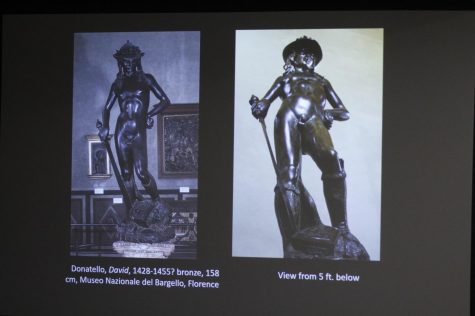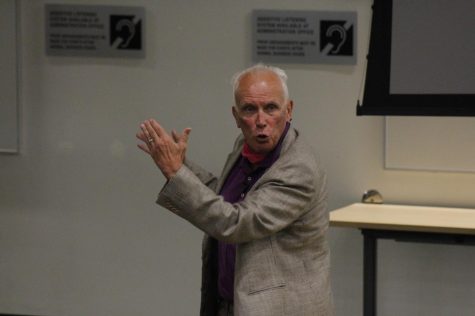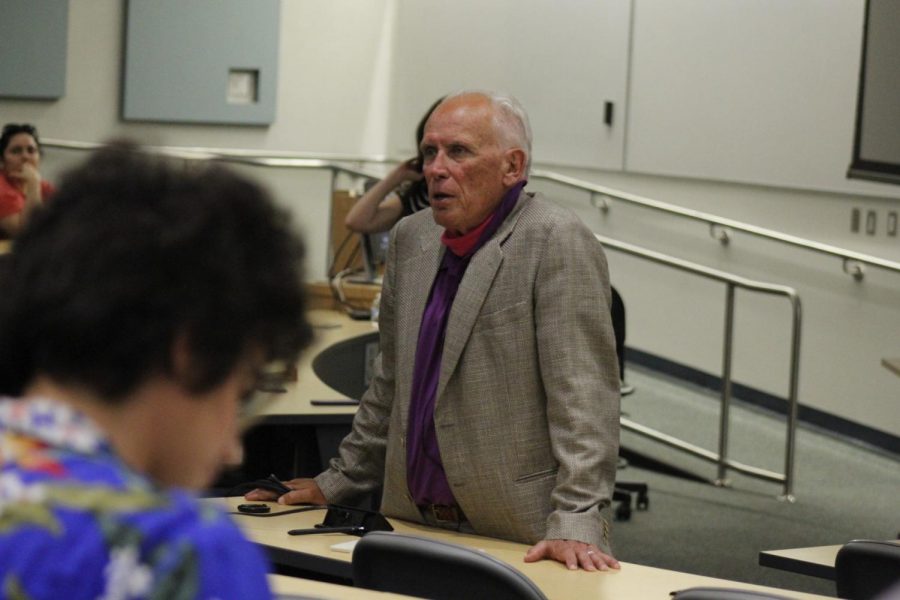A new idea of art perspective was introduced upon many students and professors who attended the lecture of Dr. Peter Weller.
The Cerritos College Visual and Culture Studies program presented this lecture on May 8, which was funded by the Associate Students of Cerritos College.
Weller is a modern day Renaissance man, an art historian, stage and screen actor and director. He has starred in many television programs like “Sons of Anarchy” and movies, such as “RoboCop.”
Weller presented his research on the diverse perceptions people have of the early Renaissance sculpture, Donatello’s David.
Along with his research, he presented his conclusions about the highly debated homoeroticism the sculpture portrays.
The presentation expanded on the idea of how there should be many ways you perceive art.

Upon the first look at Donatello’s David, Weller discussed that people have viewed it to be a very feminine or homoerotic pose, but with a different view at the sculpture from examples provided by Weller that perception changes.
With more research upon the style of pose from that time period, it’s almost as if David is standing victoriously saying, as Weller put it, “Look what I just did.”
As the lecture went on, attendees seemed to be astonished at how different the outcome can be when you view something at an angle you wouldn’t think of in the first place.

“There’s a distinction in presenting for your peers as opposed to teaching or trying to enlighten students, this was really satisfying,” said Weller referring to the lecture.
Weller said the whole point of the discourse was to open up the possible bias of how we look at art.
He thought it went very successful because he believed that the attendees saw what he saw from the photographs provided of how the sculpture should be looked at, as opposed to how it’s been looked at.
Weller became very passionate about the subject of perspective through movies.
“That’s my life and an amazing academy award-winning cinematographer Vittorio Storaro told me to go look at Renaissance art as movies, but it’s movies and I [look and teach] it from the point of view of movies.”
Weller hopes that the students left the lecture with, “An open mind, baby!”
“So whatever they’re looking at in the future, their not so damn certain that their right,” Weller said.
Many students of different majors were in attendance and were left with new knowledge on art perspective.
Katherine Morales, studio arts major, said, “I wasn’t expecting that because I was originally here to get an autograph for [his role] in “RoboCop,” but the presentation was really interesting.”
Juan Avila, anthropology major, left with the idea that “perspective is key” in art, specifically in antique art, that you can’t judge on a modern perspective.
Dennis Zanabria, anthropology and history major, said, “Art history also involves experimental archaeology, that certain things have to be applied to find another answer.”
Shelby Odies, a graphic design major said, “I thought it was amazing, it was very detailed and passionate. I feel like we got in depth with different angles and perspectives of Donatello’s statue.”
Odies was left with wanting to study more of the history of Donatello and the Renaissance time period itself.
“I liked the fact that he took initiative to take a shot from a different perspective and research how the statue is meant to stand, because once he changed the perspective for us you can instantly see the change,” Odies said.
Odies ended with hopes that there can be more presentations such as these, she says, “I love people who are passionate about it and you can hear the passion in their voice.
“I think that makes art more thrilling, you can tell when someone really knows their stuff, but it’s also about how they bring it to life and with this presentation I felt like the artwork was brought to life.”
With the discussion of art perspective during the lecture, Weller is trying to open up the minds of the adolescence, so they’re not left only having a modern day perspective on the craftsmanship they come across.
Weller concluded the lecture with “You cannot buy into one single look at [Donatello’s David]!”










